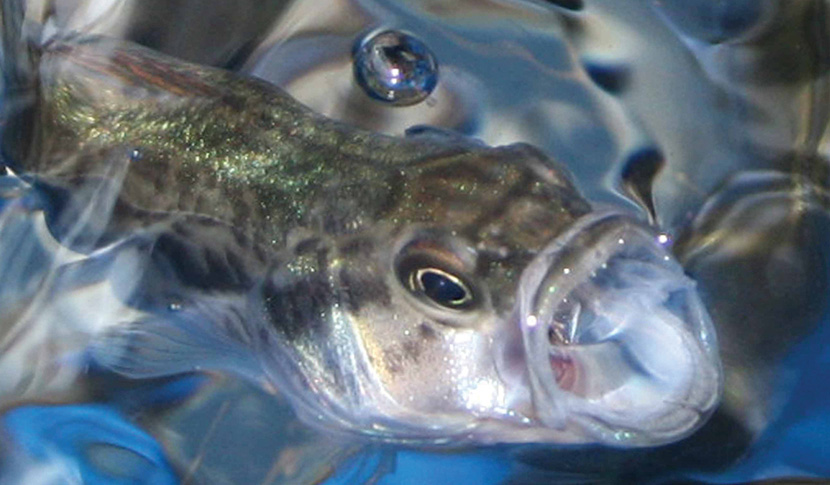
For the aquaculture industry in the Midwest to grow to meet the region’s seafood demand, some production hurdles need to be removed—one is the difficulty of feeding some newly- and recently-hatched larval fish indoors. An innovative approach, developed through Illinois-Indiana Sea Grant-funded research, shows promise for robust and healthy larvae as well as a potential new market for invasive Asian carp.
In aquaculture production, growing young larvae into fingerlings (or juvenile fish) mostly takes place in outdoor ponds. With many fish—including largemouth bass—when their eggs hatch, the tiny larvae have limited vision and mobility and primitive digestive systems. Young larval fish depend on live food, due, in part, to its nutrient availability and because they can see it moving when it swims by. But, with the food supply being unpredictable, temperatures fluctuating, and predators looming, survival rates suffer.
On the other hand, indoor production offers some control over the environment, but providing live food indoors is costly and labor intensive.
“The option then, is to replace live food, which is palatable, very colorful and contrasts against the color of the tank, with a dry pellet that immediately sinks—the larval fish oftentimes do not even get a chance to ingest it,” said Karolina Kwasek, a fish physiologist at Southern Illinois University. “Also, because we know little about larval nutrition, the dry food has been designed for more mature fish. It is composed of very complex nutrients that fish in these young stages are unable to properly digest yet need for proper growth and development.”
To test her new feeding approach, Kwasek turned to bighead carp, one of the invasive Asian carp species that has come to dominate the waters of the Illinois River and pose a potential threat to the Great Lakes. Bighead carp have been previously tested as a fishmeal source for largemouth bass.
“We wanted to see if we could use the same fish muscle source to obtain a high-quality ingredient to feed the very young of largemouth bass,” said Kwasek.
Here’s where the process is innovative—in the lab, the team used the digestive system of adult largemouth bass to break down the bighead carp muscle into simpler nutritional components so they would be readily available for larval fish. “The protein was completely digested to very small peptides or short chains of amino acids that were much more absorbable,” said Kwasek.
They tested the new food source, incorporating it into the diet of a larval largemouth bass sample, while another group had intact bighead carp muscle mixed into its diet.
The larval largemouth bass fed pre-digested bighead carp protein were larger in weight and length than those fed intact bighead carp muscle. “We think we achieved so much better growth performance because of much higher availability of these nutrients in these larval stages.”
Kwasek’s team also discovered some unexpected good news. They found that the occurrence of skeletal deformities was 17% lower in the group fed pre-digested food, which was at 6%, compared to the intact protein group at 23%. “We didn’t plan to look at deformities but as we started looking at these fish, it was obvious that the control group had so many more,” said Kwasek.
Illinois-Indiana Sea Grant is a part of University of Illinois Extension and Purdue Extension.
Writer: Irene Miles, miles@illinois.edu

